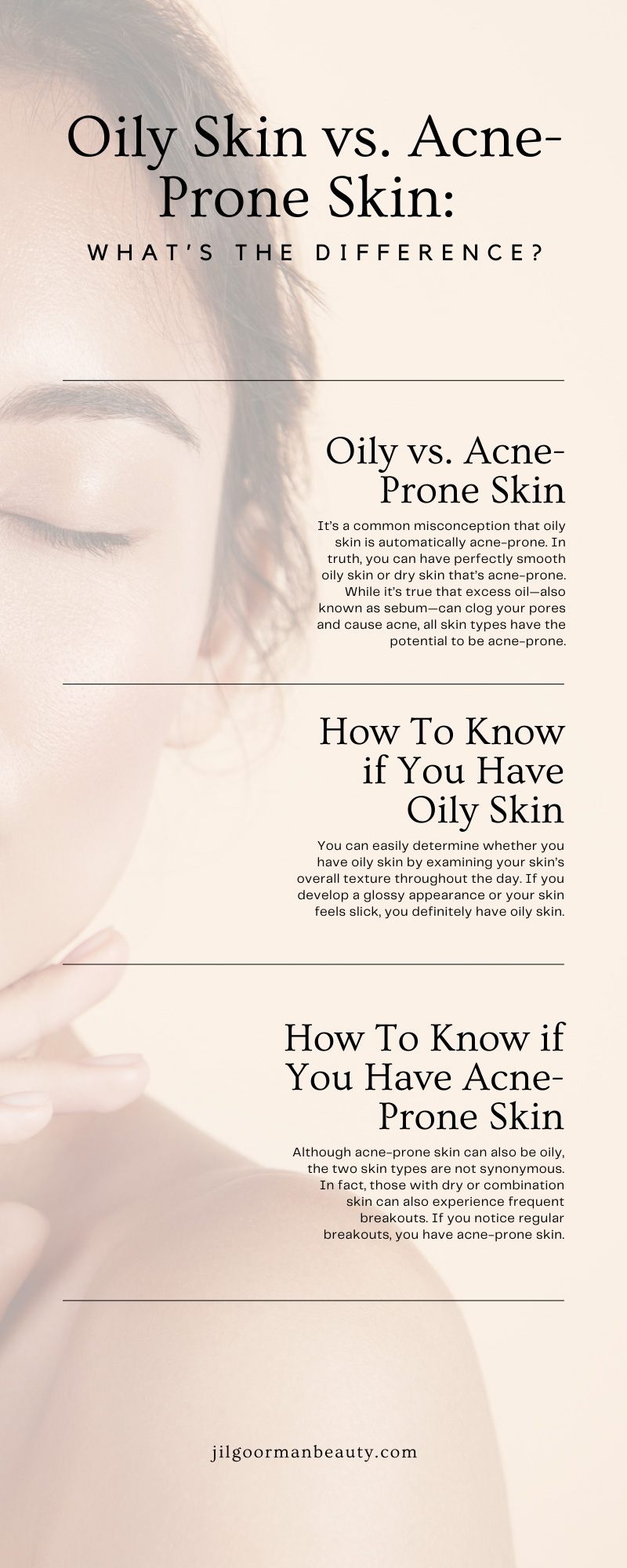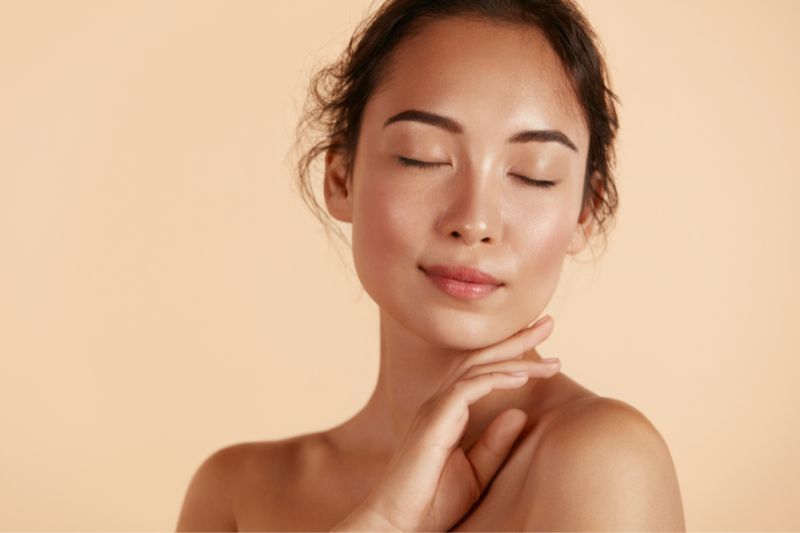You may think skin types are easy to determine, but you can actually have more than one skin feature. Although you may think oily skin is automatically acne-prone, that’s not always the case. Whether you know your skin type or not, you should understand the differences between oily skin and acne-prone skin. Your skin type may be a bit of a mystery, but learning more about different skin types and conditions is the ultimate way to build your knowledge about your own skin.
Determining Your Skin Type
When it comes to skincare, determining your skin type is one of the first things you should do. You probably already have a pretty good idea of what your skin does throughout the day, but you should conduct this test to get a definite understanding of your skin type.
- Wash your face using a gentle cleanser, and pat it dry using a soft towel.
- Skip the rest of your skincare and makeup routine, and wait a few hours.
- After two to four hours, take a closer look at your skin texture and tone to determine which type best describes your skin.
Oily Skin
If your skin appears shiny or greasy after a few hours, you most likely have oily skin. Even if you wipe it away, the excess oil will return to your face within a few hours.
Dry Skin
If your face appears dry, flaky, red, or irritated, you most likely have dry skin. While this is one of the most difficult types to manage, you should stick to a heavier, hydrating moisturizer to help alleviate the dryness.
Combination Skin
If you have patches of flakiness and areas that appear oily, you probably have combination skin. This skin type is one of the most confusing to understand, but it’s relatively easy to manage.
Oily vs. Acne-Prone Skin
It’s a common misconception that oily skin is automatically acne-prone. In truth, you can have perfectly smooth oily skin or dry skin that’s acne-prone. While it’s true that excess oil—also known as sebum—can clog your pores and cause acne, all skin types have the potential to be acne-prone.
You could have a clear complexion despite the excess oil if your pores can handle the amount of sebum without becoming clogged. On the other hand, your skin may become inflamed and pimple-filled if the sebum gets trapped inside your pores. Aside from excess oil being the root cause of acne, your skin’s overall health depends on your diet, hormones, environment, stress levels, and skincare routine. If you don’t take care of your skin and your body as a whole, you’re more likely to be acne-prone, no matter your skin type.
How To Know if You Have Oily Skin
You can easily determine whether you have oily skin by examining your skin’s overall texture throughout the day. If you develop a glossy appearance or your skin feels slick, you definitely have oily skin. While it’s not always convenient to manage oily skin, it’s not the worst possible skin type. Unfortunately, your makeup and skincare products are less likely to stay put on oily skin, but you shouldn’t let that stop you from applying your favorite products.
How To Know if You Have Acne-Prone Skin
Although acne-prone skin can also be oily, the two skin types are not synonymous. In fact, those with dry or combination skin can also experience frequent breakouts. If you notice regular breakouts, you have acne-prone skin. This simply means your pores get clogged easily, and your skin is more susceptible to blackheads and whiteheads.
Myths About Oily Skin
Believe it or not, there are plenty of myths surrounding oily skin. One of the biggest misunderstandings is that it’s the only skin type associated with acne; however, you already know that any skin type can suffer from unwanted acne.
Another common misconception about oily skin is that those with excess sebum don’t need to use moisturizer—this idea couldn’t be further from the truth. You should continue to provide your skin with ample hydration as it can become more oily without adequate moisture. With that in mind, you should be sure to use the correct moisturizing product for your unique skin. Rather than using a heavy, cream-based lotion, consider applying a gel moisturizing product instead.
Purging vs. Breakouts
Purging and breaking out are common skin occurrences, and they can look very similar. However, they each have very distinct causes.
Skin Purging
Skin purging results from an acne-fighting or exfoliating product, and it’s a healthy way for your skin to rid itself of toxins and dead skin cells. Unfortunately, purging presents itself as acne or blemishes since the active ingredients in these products speed up your skin cells’ turnover rate.
Breakouts
You may experience a bad reaction after trying a new product, but acne caused by purging should dissipate within a month. If your pimples don’t subside and pain, irritation, or redness continues, you’re most likely dealing with an old-fashioned breakout. In this case, you should discontinue using that particular product and try something different.
How To Care for Your Unique Skin Type
Caring for your skin looks different depending on your skin type, conditions, and lifestyle. For instance, you shouldn’t use oil-based products if you struggle with excessively oily skin or frequent acne. Instead, opt for a gentle cleanser, a toner for extra cleansing, an acne-fighting product, and a gel moisturizer. If you’re unsure where to start, consider purchasing a complete acne kit for oily skin.
If you struggle with dry, flaky skin, you shouldn’t use harsh ingredients that strip your skin of its natural oils. As it is, you already don’t have much to work with. For dry skin, you should use a gentle cleanser, a toner to increase your skin’s moisture absorption capabilities, and a heavy, cream-based moisturizer to lock in hydration.
Now that you know the differences between oily skin and acne-prone skin, you can make the best skincare decisions for yourself. Despite popular beliefs, skincare isn’t one-size-fits-all; you must figure out what works best for your unique skin type and conditions. Visit Jil Goorman Beauty online for more information about skin types and all things skincare- and beauty-related.


